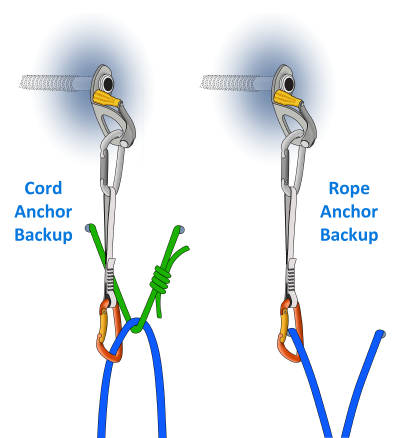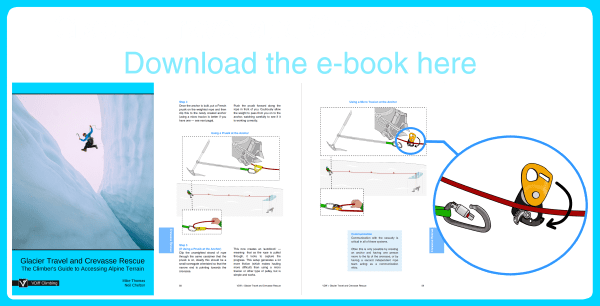This article about how to place ice screws is part of the book - Glacier Travel and Crevasse Rescue.
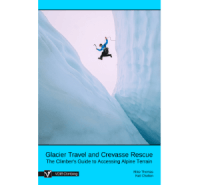
How To Place Ice Screws
You can place ice screws to make an anchor on a dry glacier, or you might be able to dig through snow on a wet glacier to reach ice.
Step 1 – Clear
Clear away any surface snow and aerated surface ice and get down to good solid glacial ice.
Step 2 – Position
Position the screw perpendicular to the surface of the ice, or slightly towards the direction of loading. Push the screw against the surface while turning it a few times with your wrist until it bites.
Step 3 – Insert
Using the handle, wind the screw all the way into the ice.
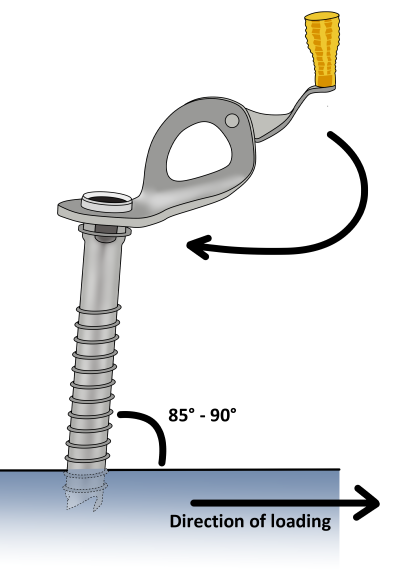
Placement Quality
You will get feedback about the quality of the placement as the screw is winding into the ice. Here are some things to consider:
- Feel the resistance of the screw cutting through the ice. Has it gone into an air pocket?
- Look at the core of ice coming out of the back of the screw. In good glacier ice this should come out looking like a crumpled ice cigar! Poorer quality placements will have snow, slush or nothing at all coming out of the hole.
- Look at the surface of the ice around the screw. Is it cracking? Some small surface cracks are okay but large sections of the ice cracking are not good.
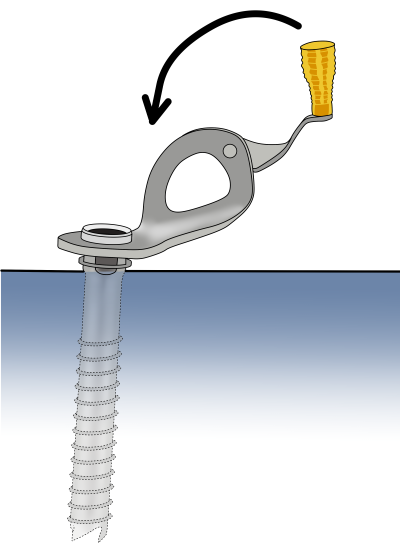
Step 4 – Loading Direction
You need to finish with the hanger pointing in the direction of pull. Do not force the hanger around – it is better to unwind slightly to get the hanger pointing in the correct direction. Forcing it would start to strip the threads of the ice screw placement.
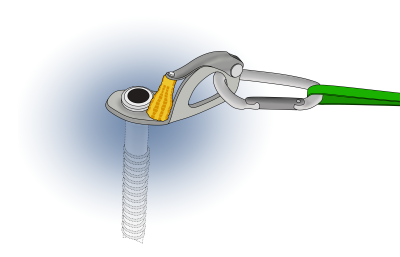
Step 5 – Double Up
A 16cm screw in good ice will hold around 10kN – the same as an average cam in good rock. If possible, place two screws at least 30cm apart and offset. Equalize them with a sling to create an anchor.
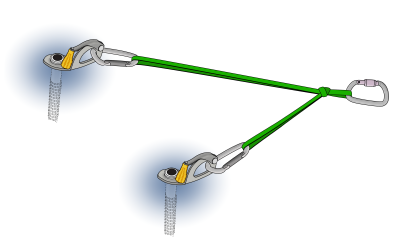
Abalakov Thread (V-Thread)
A V-thread is an ice anchor that is often used for abseiling.
You Will Need
- a long ice screw (21cm)
- a length of 7mm cord
- a V-thread tool
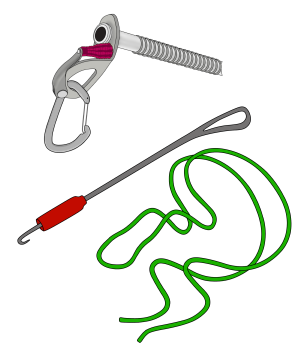
Step 1
Clear the surface so you get to solid ice. Place the ice screw perpendicular to the ice, but at a 60 degree angle sideways. Pay attention to the quality of the ice as the screw is being placed. It needs to be good.
Step 2
Remove the screw.
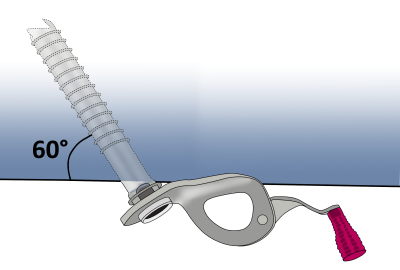
Step 3
Make a second hole at a distance approximately equal to the length of the screw so that you end up with an equilateral triangle.
It helps to look down the first hole to aim the second screw placement.
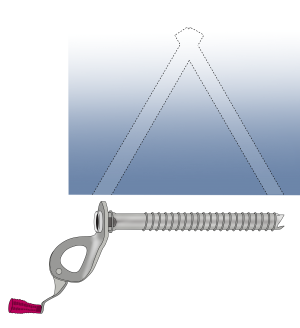
Step 4
Clean out the holes with your V-thread tool. With the tool at the bottom of the first hole, poke the cord into the second hole.
As the cord passes through into the first hole, hook it with the tool and pull it out.
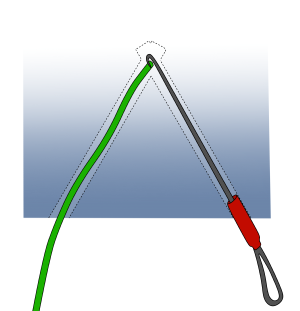
Step 5
Tie both ends of the cord together using a double fisherman's bend.
Make sure the loop is not too tight – the angle when weighting the loop should be around 45 degrees.
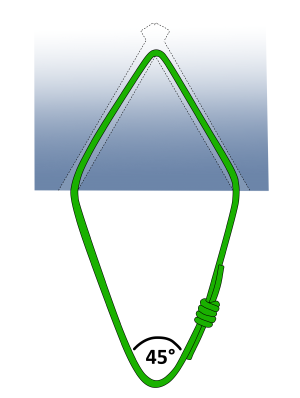
Notes
- As with all ice anchors, the quality of the ice has a massive impact on the strength of the anchor. A well constructed V-thread in good ice will hold around 8kN.
- V-threads can be made in a horizontal or vertical plain. Some evidence shows that vertical Vthreads are slightly stronger, but many people find these to be trickier to construct accurately.
- It’s important to have an accurate construction – with the angles at 60 degrees and having the connection of the two holes at the maximum length.
- If in doubt, make two V-threads (more than 30cm apart) and link them together to make an equalised anchor.
V-Thread Without Cord
To make a V-thread anchor without cord, simply poke the climbing rope through the holes instead of the cord. If abseiling on two ropes, it is important that the joining knot is positioned a good distance away so it does not get pulled into the hole. This will create an unusual strain on the anchor. It is possible for the rope to become stuck if it freezes in place. The last person down should check that the rope slides before they abseil.
Back-Up Your Anchor
To secure the first person's descent, the V-thread can be combined with another ice screw. Connect this backup screw to the rope with a little slack so it isn’t actually weighted when the first person abseils.
Make sure there isn’t too much slack, as this would shock-load the backup screw if the V-thread failed. The last person then removes the ice screw before they descend.
